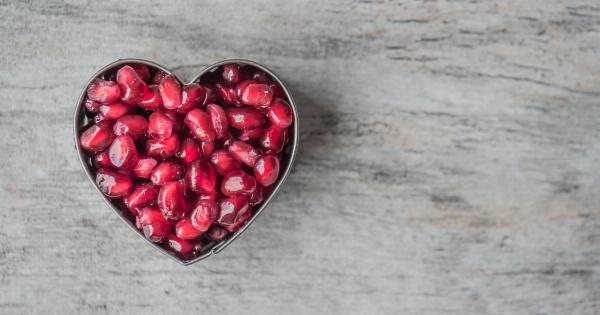Bread is a staple food that has been eaten by people for thousands of years. It is a great source of nutrients such as fiber, vitamins, and minerals, and provides energy to the body.
However, bread can also be high in calories, sugar, and salt if it is not consumed in moderation. In this article, we will discuss how to sprinkle your bread for a healthy heart.
Why is a healthy heart important?
A healthy heart is essential for our overall well-being.
The heart is responsible for pumping blood and nutrients throughout the body, and any problems with the heart can lead to serious health conditions such as heart disease, stroke, and high blood pressure. By following a healthy diet and lifestyle, we can ensure that our heart is functioning properly and reduce the risk of these conditions.
Choose the Right Kind of Bread
The first step to sprinkling your bread for a healthy heart is to choose the right kind of bread. Not all bread is created equal, and some types may be better for our heart health than others.
Whole grain bread is a great choice as it is high in fiber and contains essential vitamins and minerals that our body needs. As compared to white bread, whole grain bread has more nutrients that keep our blood flowing and the heart healthy.
Avoid Saturated Fat
Saturated fats are found in many foods, including butter, cheese, and meat. These types of fats can raise cholesterol levels in the body, leading to heart disease.
To reduce the amount of saturated fat in your diet, choose bread that is low in fat and contains non-saturated fat, a good example of this are nuts. Nuts contain plant-based proteins that are beneficial to your heart health.
Go Easy on the Salt
Salt is an essential part of our diet, but in excess, it can lead to high blood pressure and other heart-related problems. To reduce the amount of salt in your diet, choose bread that has a low-sodium content.
This will help to keep your blood pressure under control and reduce the risk of heart disease.
Use Healthier Spreads
One of the easiest ways to sprinkle your bread for a healthy heart is to use healthier spreads. Butter and margarine contain saturated fat, which can increase the risk of heart disease.
Instead, try using spreads that are low in saturated fat and high in unsaturated fats such as olive fat. Additionally, other spreads may contain heart-healthy omega-3 fatty acids, which keep your heart in good shape.
Add Nutritious Toppings
Another great way to sprinkle your bread for a healthy heart is to add nutritious toppings. Toppings such as fresh fruits or berries are great as these are high in vitamins, minerals, and fiber that keep your heart healthy.
Adding nuts or seeds is an excellent way to add protein to your bread with low or no fat. Avocados are also great toppings, rich in heart-healthy fats and essential vitamins as well.
Eat Your Bread in Moderation
While it’s important to sprinkle your bread for a healthy heart, it’s also essential to consume it in moderation. Bread is high in calories, sugar, and salt, which can lead to unhealthy weight gain and heart-related problems.
Instead, you can try to eat a whole-grain bread that won’t add extra calories and sugar to your diet, and you can pair it with a salad or fruit for a more filling and balanced meal.
Conclusion
Sprinkling your bread for a healthy heart can be easy and delicious. The key is to choose bread that is high in fiber and essential nutrients and to avoid toppings and spreads that are high in saturated fat and salt.
With these simple tips, you can enjoy a healthy and delicious bread that is good for your heart.
























